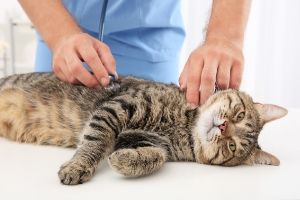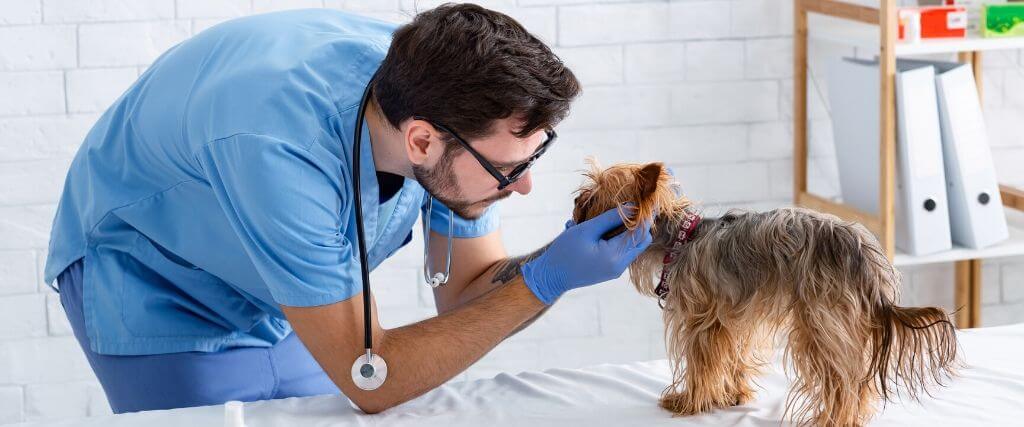If you have a pet, are thinking of getting a pet, or are simply "in the know" when it comes to pet care, you've probably heard the term "fear-free" in regards to veterinary services. Some might think it's a passing fad but, the truth is, more and more veterinarians are embracing this approach in order to make veterinary visits less stressful for all involved.
Fear-free medicine is aimed at reducing fear, anxiety, and stress (FAS) in our patients. While this is certainly more enjoyable for your furry friends (and veterinary staff!), our motivation as veterinarians goes deeper than that. Fear-free handling is really about trust and respect.
Gaining Your Pet's Trust
Signs of fear, stress, and anxiety in animals can be subtle and are easy to miss in the excitement of a car ride and vet visit. Our staff is trained to look for early signs of stress in dog and cat behavior in order to modify our handling and treatment plans before the more obvious signs become apparent.
So what does that have to do with trust and respect? Our pets cannot communicate verbally. Nearly all of their communication happens via body language - both to members of their own species and their human families (even though we may not be aware of a lot of it!). By learning a dog’s or cat’s language, we can communicate more effectively through our own actions.
When a dog or cat indicates to us that they are uncomfortable with a lip lick, yawn, or constant movement in the room, we can adjust our actions to say, “Hey, I hear you.” This is done by changing our own body language in some circumstances - leaning back, turning our body to the side, looking slightly away.
It can also be done by simply giving the patient a break, tossing a few treats their way, and giving the patient the choice about whether to return to our space. When this is done repeatedly either during a single visit or over many comfort conditioning visits, this teaches the pet that they can trust us to respect their boundaries.

Be Patient As You Keep Your Eyes on the Prize
Do fear-free veterinary practices sound extreme... as though they would take forever? It does and it doesn’t. With our average patient, small changes in our handling and body language can relieve fear, anxiety, and stress and allow us to accomplish everything that needs to be done. Our average appointment takes 30 minutes or less. In other words, more nervous patients can take a little bit longer. Sometimes it’s a longer visit, a few happy visits, or adding on anti-anxiety medication before the next visit that allows the patient to finally realize we are not the enemy. In rare cases, it can be weeks or months of work in the clinic and at home to gain trust and consent.
What is the Point of Fear Free Veterinary Services?
So why do we do this? Isn’t it easier just to hold cats and dogs down and get it over with? Ask anyone in a reputable clinic and you’ll get a resounding NO WAY. Ignoring signs of stress and pushing through teaches the pet that subtle signs don’t work. This can lead to an escalation in behavior that, at best, makes a pet more difficult to handle and, at worse, could result in a bite. This makes appointments take longer and care suffers - plus, someone could get hurt! If we have to hold down a pet to examine it, we can’t get a full and thorough exam. To boot, the adrenaline that comes with fear, anxiety, and stress can mask symptoms and make problems harder to diagnose.

How Do Vets Benefit From Fear Free Veterinary Practices?
The best part about focusing on Fear Free techniques is seeing nervous patients back a year later and finding that they remember! They remember that we respect them. They trust that we won’t hurt them. It may take a happy visit to prepare for their annual but, all in all, the investment of time pays off in subsequent years in that exams are faster, more thorough, and we can do more because we’ve taken the time to find what works for that patient.
We are willing to work with pets that other clinics may not be comfortable with because our staff understands that most “aggressive” cat or dog behavior is just a front for a pet that’s terrified. When we aren’t able to accomplish an exam or treatment easily, we don’t buckle down and try harder. We listen to our patients and change the plan. We especially understand that some procedures are more stressful to patients than others, such as blood draws.
You can also ask your vet if they work with trainers who reenforce operant conditioning and use positive reinforcement to help the pet associate a visit to the vet as something that shouldn't provoke anxiety. A multi-pronged approach for especially nervous patients is recommended. Want to learn more about what fear-free veterinary practices can do for your pet? Give us a call!

